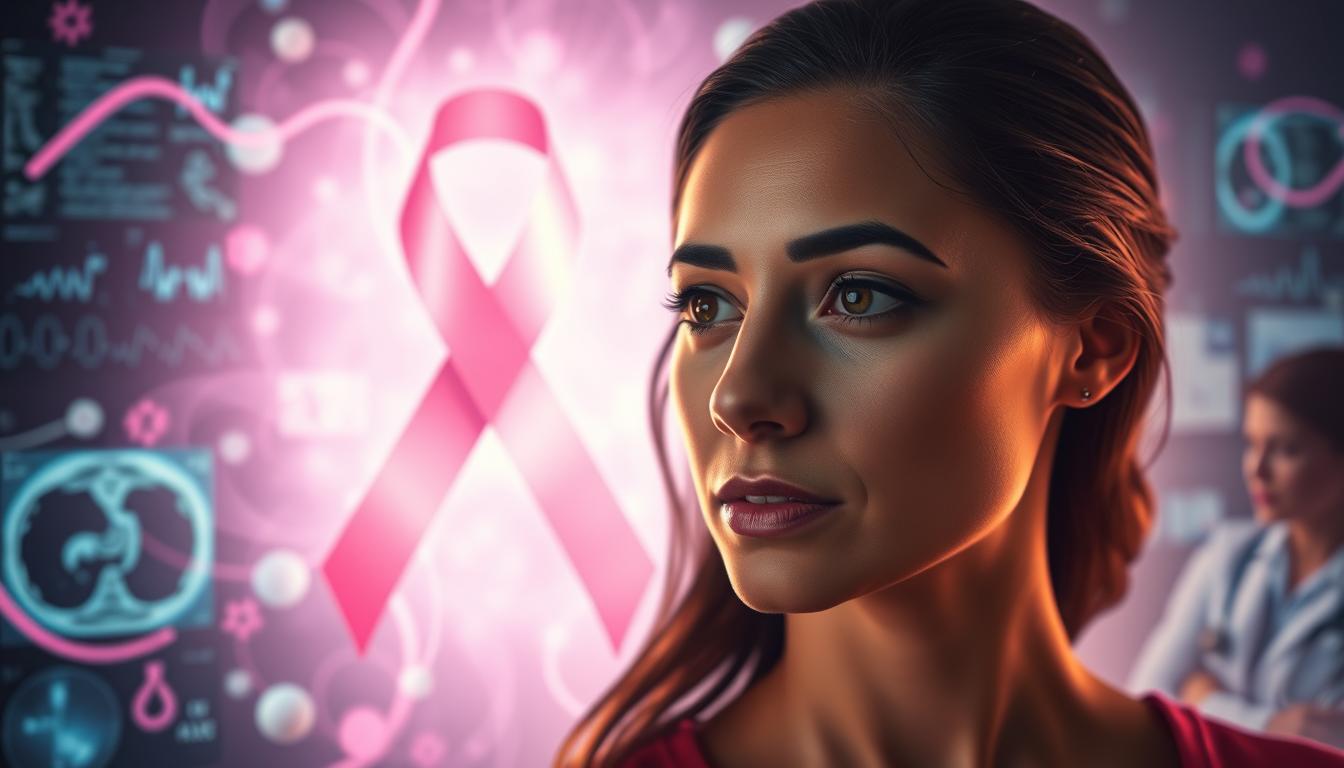Knowing about female cancer is very important. It helps protect women’s health. Spotting cancer signs early is key.
Even before symptoms show, regular check-ups can help. Learn more about these signs to catch cancer early.
There are new treatments that give hope. They turn a tough diagnosis into a chance to get better.
Support for women with cancer shows the power of coming together. This article aims to guide women through the tough times of cancer. It highlights the need for special care and staying strong.
Key Takeaways
- Early detection of cancer in women is key to successful treatment.
- Knowledge and awareness of cancer symptoms empower women in their healthcare journey.
- Oncology care is advancing with a range of personalized treatments for female cancers.
- Support networks play a critical role in the holistic recovery of women facing cancer.
- Access to up-to-date health resources can guide women to make informed decisions about their health.
Understanding the Early Signs of Cancer in Females

It’s important to spot cancer symptoms in women early. This can lead to better treatment results. We’ll look at three key symptoms that are often missed until it’s too late.
Abnormal Bleeding
Abnormal bleeding is a big gynecological cancer symptom. It’s not just about irregular periods. Look out for unexpected spotting, bleeding between periods, or after menopause. Seeing a doctor right away is key, as it could mean cervical or endometrial cancer.
Unexplained Weight Loss
Unexplained weight loss is another warning sign. It happens without changes in diet or exercise. Losing weight quickly can signal cancer and needs a detailed check-up for early detection of female cancer.
Persistent Fatigue
Persistent fatigue that doesn’t go away with rest is a cancer sign. It’s often seen as just tiredness, but it can mean leukemia or other cancers. This fatigue can really affect daily life, so getting medical help is essential.
The Major Types of Cancer Affecting Females
Understanding cancer prevalence in women is key to health. Breast cancer is the most common, affecting millions yearly. Other cancers like cervical cancer, ovarian cancer, and endometrial cancer also pose significant risks. Each cancer type has its own challenges and risk factors, making awareness and early action essential.
- Breast Cancer: It’s the most common cancer in women and the second most common overall. Early detection through mammograms can greatly improve treatment success.
- Cervical Cancer: This cancer can be prevented with HPV vaccination and screenings. The HPV vaccine has greatly reduced cases linked to the virus.
- Ovarian Cancer: Often hard to detect early, ovarian cancer can progress undetected. Family history and genetic markers like BRCA mutations are key risk factors.
- Endometrial Cancer: This cancer is common in women’s reproductive systems. It’s often linked to obesity and hormonal imbalances. Regular check-ups can help catch it early.
Understanding each cancer type is vital for effective treatment. For more information and statistics, visit reputable resources focused on cancer awareness and prevention.
Given the cancer prevalence in women, boosting awareness and regular medical check-ups are critical. These efforts can help lower cancer-related deaths. Educating women about prevention and treatment options empowers them to manage their health.
Advanced Treatment Options for Female Cancers
Medical technology has made big strides in cancer care for women. Now, treatments range from minimally invasive surgery to new cancer therapies. These advancements bring hope and better results to patients everywhere.
Surgical Procedures
New surgical methods for female cancers aim to save more healthy tissue and cut down on recovery time. Techniques like lumpectomies and partial mastectomies focus on keeping quality of life high. Laparoscopic and robot-assisted surgeries are also making a big difference in treating ovarian and cervical cancers.
Chemotherapy and Radiation Therapy
Chemotherapy and radiation therapy are key in cancer treatment, and they’re getting better. New ways of giving these treatments have made them safer and less harsh. For example, intraperitoneal chemotherapy puts drugs right where they’re needed in the abdomen, boosting effectiveness and reducing harm to the rest of the body.
Targeted Therapy and Immunotherapy
Targeted therapy and immunotherapy are changing cancer treatment. These new approaches target specific cancer cells, sparing healthy ones. This means treatments work better and cause fewer side effects, improving life quality for patients. Hormone therapy is also helping, mainly in treating breast cancers that respond to hormones, by stopping cancer growth.
The field of cancer care is constantly evolving, with a focus on personalized and caring treatment. This shows the promise and progress in helping patients fight cancer.
Cancer Female: Navigating Diagnosis, Treatment, and Recovery
Starting a cancer journey as a female can be very emotional and physical. Coping with a cancer diagnosis needs strong support and resilience. Healing after cancer is about both mind and body.
During treatment, patient care teams focus on both medical and emotional needs. They help women deal with the emotional stress of treatment. Care also continues after treatment, supporting long-term recovery.
After treatment, the focus is on healing after cancer. This is a time of deep emotional change. Counseling and survivor networks are key in this phase, helping with recovery.
| Phase | Focus Area | Support |
|---|---|---|
| Diagnosis | Understanding and Acceptance | Counseling, Family & Friends |
| Treatment | Medical and Emotional Care | Healthcare Team, Support Groups |
| Recovery | Healing and Rebuilding | Rehab Programs, Survivor Networks |
Going from patient to survivor is a journey of growth and finding strength. It’s about embracing a new normal and using support networks. Whether it’s finding comfort in shared experiences or starting new wellness habits, the journey is deeply personal and transformative. It’s important to create environments and relationships that promote healing and hope at every stage.
Conclusion
Fighting cancer in females is a journey where knowledge is key. This article has covered many topics, from early signs to advanced treatments. We talked about how important it is to catch cancer early.
Hope for cancer patients comes from caring support and ongoing help. It shows we stand together against cancer. Patients find a community that offers understanding and resources.
Cancer research is moving us forward, bringing new hope and treatments. As we finish this article, we see a brighter future for female cancer patients. Every step forward gives us hope. Together, we are making progress and fighting cancer with strength and optimism.




